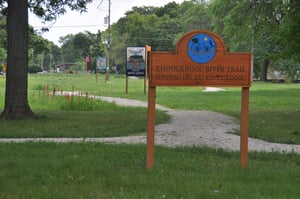Not very long ago, the only way for a person to be evaluated or treated by a medical professional was to be seen in person. Exclusively in-person healthcare, despite its benefits, can be challenging to access for some communities and under certain circumstances. In recent years, telehealth in Wisconsin has emerged as a strategy for providing quality healthcare to people across our communities.
Here is a look at telehealth’s role in Wisconsin’s healthcare landscape and how a project funded by the Advancing a Healthier Wisconsin Endowment (AHW) expanded Wisconsinites’ access to telehealth services during a crucial time.
Why is Telehealth a Helpful Strategy for Wisconsin Healthcare?
Quality Healthcare for Rural Communities
Timely access to quality healthcare can be a challenge for individuals in Wisconsin’s rural communities. Most of the state is rural land, making up 97% of its geography. However, only 25% of residents live in nonmetro areas, and more than 250,000 live more than 15 miles from their closest hospital–often in locations without major roadways.
In addition to the challenges created by the time and distance many rural Wisconsinites must travel to access healthcare, they also face increased health risks. Rural residents are more likely than urban to die prematurely from heart disease, cancer, unintentional injury, chronic lower respiratory disease, or stroke.
Telehealth in Wisconsin is an important solution to help address disparities between healthcare access for rural and urban communities. It’s available to most residents, thanks to increased internet access across the state. And because telehealth does not require travel resources or time, it allows patients to more easily schedule care ranging from mental and behavioral health to medical consults and remote exams, creating more equitable access to care.
Telehealth in Wisconsin During COVID-19
At the height of the COVID-19 pandemic, people around the world faced unprecedented circumstances. The Safer at Home Order limited outings and travel to essential activities for Wisconsin residents. And while many health services providers continued operating, telehealth emerged as a crucial healthcare option.
As the Wisconsin Hospital Association (WHA) stated in their 2022 Health Care Workforce Report, “Telehealth was a lifeline during the early days of COVID-19 and has remained a convenient, effective and increasingly popular way of accessing care.”
Constructing a Statewide Health Network During Peak-Pandemic
In April 2020, when many of the state’s free and charitable clinics (FCCs) were forced to limit their services or close their doors, the Wisconsin Association of Free and Charitable Clinics (WAFCC) created a solution. In a project funded by AHW, the association implemented a telehealth infrastructure that enabled continued services to vulnerable populations and prevented patients from overburdening local health systems.
Through its 12-month project, working with Medical College of Wisconsin’s Rebecca Lundh, MD, and Staci Young, PhD (family and community medicine), WAFCC built a statewide telehealth network with 41 FCCs. Using AHW funding, they launched dental, medical, and behavioral telehealth appointments and delivered more than 4,300 patient visits (as of May 2021) via 175 clinic providers.
Telehealth for Wisconsin Medicaid Members During the Pandemic and Beyond
In efforts to provide care and resources for individuals who test positive for COVID-19, the Wisconsin Department of Health Service (DHS) introduced telehealth services to connect Wisconsinites with medical professionals quickly. With its telehealth services, COVID-19 patients could communicate with clinicians who determine if potentially life-saving antiviral treatments are recommended and can prescribe them.
DHS expanded its telehealth policy for Medicaid members to ensure their access to care during the pandemic. And when the pandemic federal public emergency ends, DHS will permanently offer telehealth for Wisconsin Medicaid members, including:
- General health care
- School-based services
- Dentistry
- Targeted case management
- Therapies
- Behavioral health
Telehealth in Wisconsin During Periods of Hospital Stress
When Wisconsin residents look to avoid hospitals due to overwhelmed facilities or reported staff shortages, telehealth allows them to schedule appointments with care providers before traveling, encountering excessive waits, or exposing themselves to other sick individuals.
In addition to navigating an increased patient load due to the COVID-19 pandemic, Wisconsin hospitals have struggled to match the demand for care with an adequate workforce and facility space in recent years. WHA’s 2022 Health Care Workforce Report indicated that out of the 17 healthcare professions they track, 12 saw an increase in vacancies.
With this year’s notable spike in seasonal respiratory illnesses, including respiratory syncytial virus (RSV) and influenza, came an accompanying rise in emergency room visits and hospitalizations. As a result, many hospitals were pushed to capacity, meaning long waits for many patients and, in some cases, rerouting them to other healthcare facilities.
Telehealth allows Wisconsin residents to meet virtually or over the phone with their primary care or urgent care providers before embarking on a hospital visit in non-emergency situations. Plus, by limiting exposures through virtual appointments, patients can prevent further transmission and spread of respiratory illnesses without compromising care.
The Future of Telehealth in Wisconsin
Time will tell whether telehealth will continue to grow as a mode of accessing healthcare in the coming years. As technology continues to advance, and the possible uses for–and benefits of–telehealth are explored and expanded upon, the potential for better access to healthcare for all communities at any given time is promising.

.png?width=900&name=Untitled%20design%20(5).png)
.png?width=439&height=547&name=Screenshot%20(24).png)



